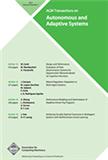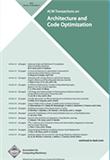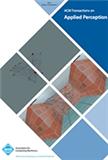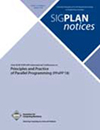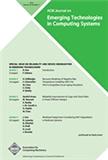JOURNAL OF SENSORY STUDIES
SCI/SCIE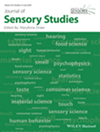
- 雜志名稱:感覺(jué)研究雜志
- 簡(jiǎn)稱:J SENS STUD
- 期刊ISSN:0887-8250
- 大類研究方向:工程技術(shù)
- 影響因子:2.072
- 數(shù)據(jù)庫(kù)類型:SCI/SCIE
- 是否OA:No
- 出版地:UNITED STATES
- 年文章數(shù):38
- 小類研究方向:工程技術(shù)-食品科技
- 審稿速度:較慢,18-36周
- 平均錄用比例:較易
官方網(wǎng)站:http://onlinelibrary.wiley.com/journal/10.1111/(ISSN)1745-459X
投稿網(wǎng)址:http://mc.manuscriptcentral.com/joss
JOURNAL OF SENSORY STUDIES
英文簡(jiǎn)介The Journal of Sensory Studies publishes original research and review articles, as well as expository and tutorial papers focusing on observational and experimental studies that lead to development and application of sensory and consumer (including behavior) methods to products such as food and beverage, medical, agricultural, biological, pharmaceutical, cosmetics, or other materials; information such as marketing and consumer information; or improvement of services based on sensory methods. All papers should show some advancement of sensory science in terms of methods. The journal does NOT publish papers that focus primarily on the application of standard sensory techniques to experimental variations in products unless the authors can show a unique application of sensory in an unusual way or in a new product category where sensory methods usually have not been applied.Papers could address (these topics are not exhaustive):new developments in sensory (including consumer) methods,consumer and product acceptability studies that highlight unique applications of sensory methods (the focus must be on the unique aspects of the sensory application, not on the product outcome)the psychology of human sensory responses that have a practical aspect of interest to practicing sensory scientists,applications of theoretical sensory analysis constructs that lead to possible approaches to problem resolution (it must be clear how the theoretical understanding will enhance practical problem solving),external and internal validity of sensory (including consumer) panels,comparison of methods that include limitations of the methods being studiedlexicon development of product categories of wide interest (please see Lawless and Civille, “Developing Lexicons: A Review”, 2013, JoSS: 28:270-281 before submitting a lexicon paper)word meanings and semantic differential technique as applied to sensory science,statistical applications that can be applied to sensory problems (Note: JoSS does not publish proprietary “black box” methods and in the case of statistical applications, practical solutions for implementing the analyses, including programs and coding if necessary, must be given)philosophies and controversies in sensory scienceNote: Journal of Sensory Studies accepts papers using a wide variety of published sensory methods and encourages submission of new methods where the information gained and possible validation is described.Please note that Journal of Sensory Studies does not accept papers:where the emphasis is on a comparison of products made with various treatments, except to the extent needed to highlight the sensory methods or theories being studied. For example, a paper focused on the comparison of the sensory aspects of cakes made with three types of flour will not be accepted for review. A paper using such an experiment to compare sensory methods or study statistical techniques for sensory may be considered if the focus is clearly on the sensory/statistical principles and methods comparison and not on the food science issues involved with the ingredientsthat use too few consumers in quantitative tests (approximately 100, although there are exceptions), nor where the consumers are not part of the target market. Papers that use students and faculty or company employees as the ‘consumers’ in the study generally are not accepted unless it is clear that they represent the intended target population.where acceptability or preference has been measured by trained or oriented panelists or experts, unless there is a clear criterion for “quality” such as a grading scale as used by government inspectors. In that case, the quality grading scale should be validated first or an explanation provided as to why this is not needed.That use instruments to measure sensory properties unless those instruments have been validated using human panelists. The journal never accepts papers that purport to “validate” human sensory experience based on an instrumental measures; the instruments must be validated by humans for sensory research, not the other way around.
JOURNAL OF SENSORY STUDIES
中文簡(jiǎn)介《感官研究雜志》發(fā)表了最初的研究和評(píng)論文章,以及針對(duì)觀察和實(shí)驗(yàn)研究的說(shuō)明性和指導(dǎo)性論文,這些研究導(dǎo)致感官和消費(fèi)者(包括行為)方法在食品和飲料、醫(yī)療、農(nóng)業(yè)、生物、醫(yī)藥等產(chǎn)品中的開發(fā)和應(yīng)用。尤蒂卡、化妝品或其他材料;營(yíng)銷和消費(fèi)者信息等信息;或基于感官方法改進(jìn)服務(wù)。所有的論文都應(yīng)該顯示出感官科學(xué)在方法上的一些進(jìn)步。期刊沒(méi)有發(fā)表主要關(guān)注標(biāo)準(zhǔn)感官技術(shù)在產(chǎn)品實(shí)驗(yàn)變異中的應(yīng)用的論文,除非作者能夠以一種不尋常的方式展示感官的獨(dú)特應(yīng)用,或者在通常不采用感官方法的新產(chǎn)品類別中展示感官的獨(dú)特應(yīng)用。論文可以解決(這些主題并不詳盡):感官(包括消費(fèi)者)方法的新進(jìn)展,強(qiáng)調(diào)感官方法獨(dú)特應(yīng)用的消費(fèi)者和產(chǎn)品可接受性研究(重點(diǎn)必須是感官應(yīng)用的獨(dú)特方面,而不是產(chǎn)品結(jié)果)對(duì)實(shí)踐感官科學(xué)家有實(shí)際興趣的人類感官反應(yīng)心理學(xué),理論感官分析結(jié)構(gòu)的應(yīng)用導(dǎo)致了解決問(wèn)題的可能途徑(必須清楚理論理解將如何提高實(shí)際問(wèn)題的解決能力)。感官(包括消費(fèi)者)面板的外部和內(nèi)部有效性,包括研究方法局限性的方法比較廣泛關(guān)注的產(chǎn)品類別的詞匯開發(fā)(請(qǐng)參閱Lawless和Civille,“開發(fā)詞匯:回顧”,2013,joss:28:270-281,然后提交詞匯論文)詞義和語(yǔ)義差異技術(shù)在感官科學(xué)中的應(yīng)用:可應(yīng)用于感官問(wèn)題的統(tǒng)計(jì)應(yīng)用(注:JOS不發(fā)布專有的“黑匣子”方法,對(duì)于統(tǒng)計(jì)應(yīng)用,必須給出實(shí)施分析的實(shí)際解決方案,包括必要的程序和編碼)感官科學(xué)中的哲學(xué)與爭(zhēng)論注:感官研究雜志接受使用各種已發(fā)表的感官方法的論文,并鼓勵(lì)提交新方法,其中描述了獲得的信息和可能的驗(yàn)證。請(qǐng)注意,《感官研究雜志》不接受論文:重點(diǎn)是比較不同處理的產(chǎn)品,除了強(qiáng)調(diào)所研究的感官方法或理論所需的程度。例如,一篇側(cè)重于三種面粉制作的蛋糕感官方面的比較的論文將不被接受審查。如果論文的重點(diǎn)是感官/統(tǒng)計(jì)原理和方法的比較,而不是與配料有關(guān)的食品科學(xué)問(wèn)題,則可以考慮使用此類實(shí)驗(yàn)比較感官方法或研究感官統(tǒng)計(jì)技術(shù)。這在定量測(cè)試中使用的消費(fèi)者太少(約100個(gè),盡管有例外),或者消費(fèi)者不是目標(biāo)市場(chǎng)的一部分。在研究中使用學(xué)生、教職員工或公司員工作為“消費(fèi)者”的論文通常不被接受,除非清楚他們代表了預(yù)期的目標(biāo)人群。除非有明確的“質(zhì)量”標(biāo)準(zhǔn),如政府檢查員使用的評(píng)分標(biāo)準(zhǔn),否則接受度或偏好由受過(guò)培訓(xùn)或定向的專家或?qū)<液饬俊T谶@種情況下,應(yīng)首先對(duì)質(zhì)量分級(jí)表進(jìn)行驗(yàn)證,或提供不需要驗(yàn)證的原因的解釋。使用儀器來(lái)測(cè)量感官特性,除非這些儀器已經(jīng)由人體專家驗(yàn)證過(guò)。期刊從不接受那些聲稱基于儀器測(cè)量來(lái)“驗(yàn)證”人類感官體驗(yàn)的論文;這些儀器必須經(jīng)過(guò)人類對(duì)感官研究的驗(yàn)證,而不是相反。
精選同類領(lǐng)域期刊,熱門推薦輕松get~
-
- ACM Transactions on Autonomous and Adaptive Systems
- 期刊ISSN:1556-4665
- 大類研究方向:工程技術(shù)
- 影響因子:
- 數(shù)據(jù)庫(kù)類型:SCIE
- 咨詢投稿
-
- ACM Transactions on Architecture and Code Optimization
- 期刊ISSN:1544-3566
- 大類研究方向:工程技術(shù)
- 影響因子:1.444
- 數(shù)據(jù)庫(kù)類型:SCIE
- 咨詢投稿
-
- ACM Transactions on Applied Perception
- 期刊ISSN:1544-3558
- 大類研究方向:工程技術(shù)
- 影響因子:
- 數(shù)據(jù)庫(kù)類型:SCIE
- 咨詢投稿
-
- ACM Transactions on Algorithms
- 期刊ISSN:1549-6325
- 大類研究方向:工程技術(shù)
- 影響因子:
- 數(shù)據(jù)庫(kù)類型:SCIE
- 咨詢投稿
-
- ACM SIGPLAN NOTICES
- 期刊ISSN:0362-1340
- 大類研究方向:工程技術(shù)
- 影響因子:
- 數(shù)據(jù)庫(kù)類型:
- 咨詢投稿
-
- ACM Journal on Emerging Technologies in Computing Systems
- 期刊ISSN:1550-4832
- 大類研究方向:工程技術(shù)
- 影響因子:2.013
- 數(shù)據(jù)庫(kù)類型:SCIE
- 咨詢投稿
精選常見問(wèn)題,答疑解惑輕松get~
- 三篇ssci論文怎么同時(shí)投出去
- 中文核心和sci哪個(gè)影響力更大
- 中科院一區(qū)和JCR一區(qū)期刊占比區(qū)別
- 發(fā)ssci如何快速找合適的期刊
- 資源保護(hù)方面論文投sci指導(dǎo)
- 外貿(mào)行業(yè)論文發(fā)ssci周期長(zhǎng)嗎
- 國(guó)外的sci投到錄用一般多久
- ssci期刊國(guó)內(nèi)認(rèn)可度
- 核能應(yīng)用論文翻譯英文發(fā)sci容易的方法
- 人口老齡化研究論文符合ssci領(lǐng)域嗎
- sci開源和不開源分別是什么意思?有什么影響?
- ssci發(fā)表是高水平學(xué)術(shù)論文嗎
- 生態(tài)修復(fù)主題英文論文會(huì)收錄哪些數(shù)據(jù)庫(kù)
- 哲學(xué)專業(yè)論文發(fā)英文期刊
- 中科院sci四個(gè)區(qū)的劃分
- ssci期刊和sci期刊的區(qū)別
- ESCI和SCIE要分清
- ssci送審論文多久出結(jié)果
- ssci論文二作有用嗎
- 水土保持類英文期刊好選嗎
- ssci期刊論文一定會(huì)檢索嗎
 投稿咨詢
投稿咨詢

